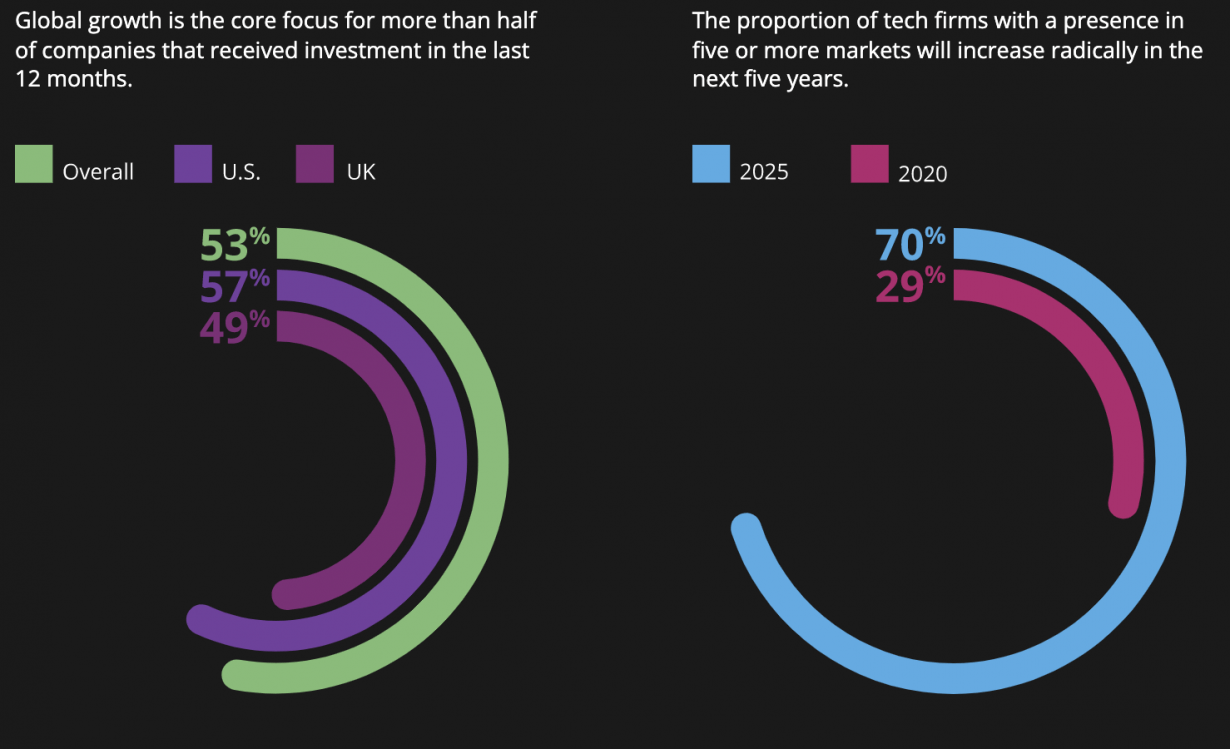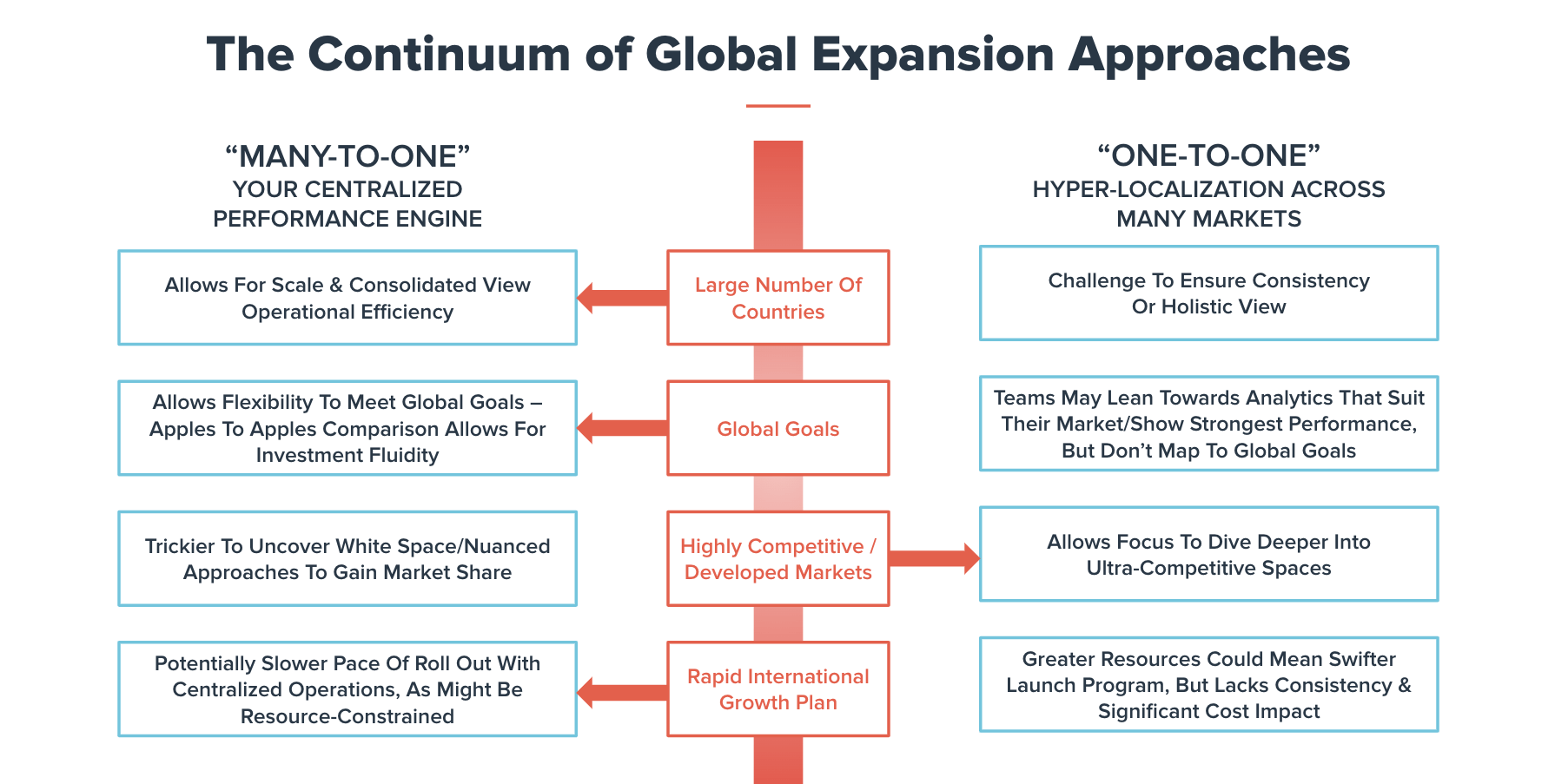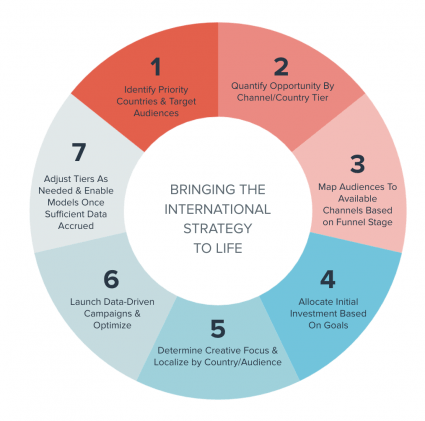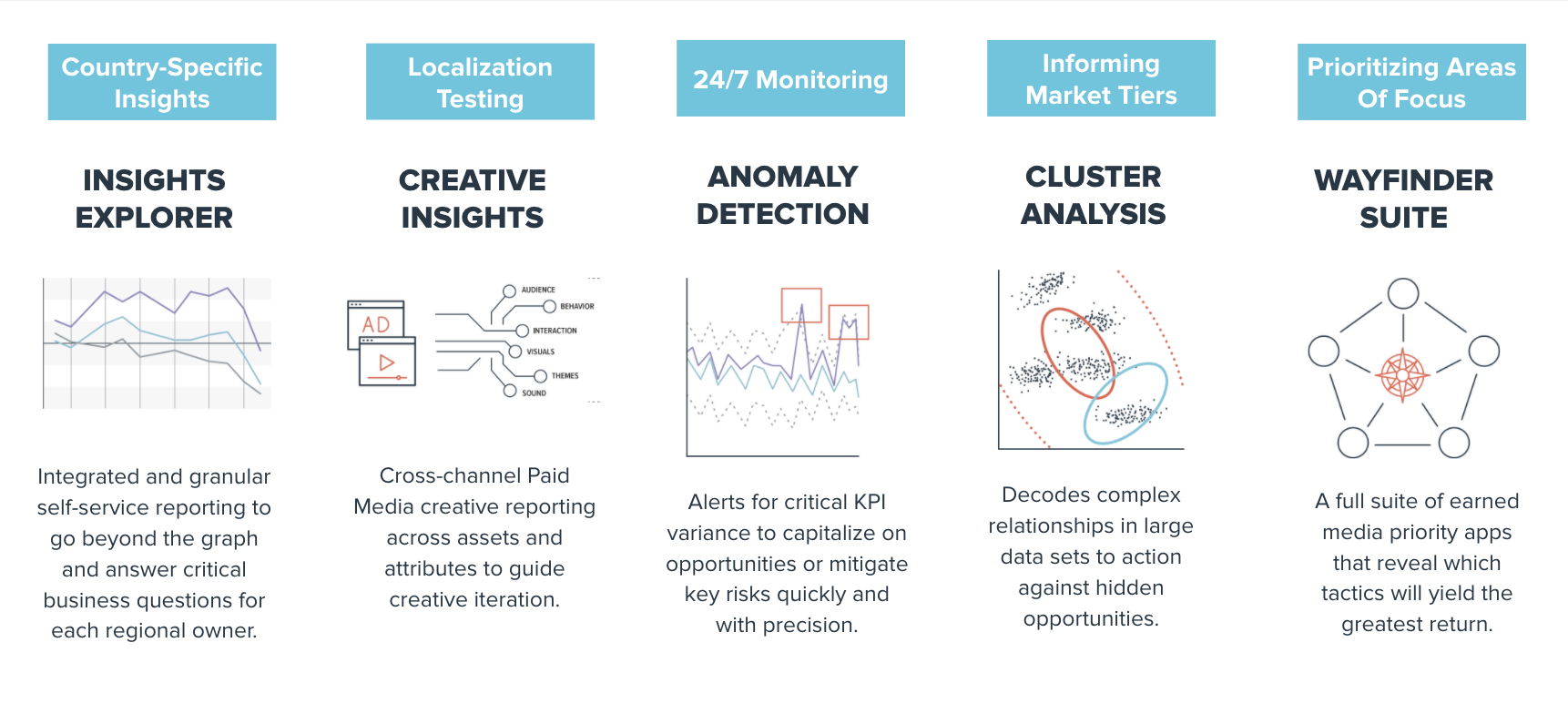The itch for international expansion is strong for high-growth businesses of nearly every kind, but it’s only too easy to fail to capitalize on opportunities because you’ve taken the wrong approach. But that doesn’t mean it’s a bad idea; it just means you need to get strategic about your marketing from minute one if you’re eyeballing new markets.
According to Velocity Global, global growth is the core focus for more than half of the companies that received an investment in 2020, with 70% of tech companies, in particular, planning to have a presence in five or more countries by 2025.

There are obvious benefits to expanding into new international markets: a new pool of potential customers is a great way to drive business growth. But you need to be aware of the hurdles before painting an overly rosy picture. Differing consumer expectations, political considerations, regulatory restrictions, and plain old cultural misalignment can all torpedo global expansion before it even begins.
Thomson Reuters Worldscope discovered that out of 20,000 companies in 30 countries, companies selling abroad had an average ROA of –1% nearly five years after their move; in fact, it took an average of 10 years to reach +1%.
So how do you make sure you have everything in place to translate domestic success and international potential into a successful global expansion for your brand?
Finding the right approach for global expansion
Think of international expansion plans as existing on a continuum that goes from a many-to-one approach to one-to-one. With many-to-one, you’re keeping your operations centralized even as you roll out into a large number of new countries.
The benefits of that approach include the ability to scale quickly, efficient communication, strong governance, and investment fluidity. But it can be difficult to take a nuanced approach specialized for individual markets, and there can be wasted investments based on strategic decisions that don’t apply across the board.
Don’t assume that what you know at home holds true in every market.
The one-to-one approach is hyper-localized and requires standalone operations in each market. The pros column for this kind of strategy is really all about focus; the level of localization and customization possible with a one-to-one strategy can help your business break into even ultra-competitive markets much faster and more effectively. But it can be very challenging to maintain a consistent brand, achieve holistic measurement, and keep all teams aligned on global business goals.

For most businesses moving into new markets, we recommend taking a hybrid approach that takes the best of both worlds by balancing efficiency and localization and can be adapted to your business’s specific needs.
There are three basic kinds of markets you’ll likely be considering: expanding an existing offering in an already-established market, introducing a new entry into an established market, and creating demand in a brand new market. Each type is associated with specific business goals.

Identifying the kinds of markets your business is interested in should help you clarify what you want to accomplish. Then it’s essential to dig into the available data to get specific about the opportunity at hand.
Leverage audience insights to identify global market opportunities
Your global strategic approach needs to take into account your goals, the landscape of the new market (maturity, familiarity, competition, and more), the scope and nature of the opportunity identified, consumer behavior and expectations, and tactical execution customized to each relevant market.
In a specific country, we look to data sources across four basic buckets to assess the landscape of a particular market: topline revenue trends and expected growth outlook; market size and trends; competitive insights and trends; and regulatory restrictions and developments that could affect digital marketing or a client’s specific industry.
 One major source of market information that helps us define the type of opportunity is Google search data, which can help us understand volume, maturity, efficiency, and competitiveness, as well as growth trends. We combine that data with other insights from other sources to understand how strong both the offering and category as a whole are across different markets and how well the brand is likely to resonate with local audiences.
One major source of market information that helps us define the type of opportunity is Google search data, which can help us understand volume, maturity, efficiency, and competitiveness, as well as growth trends. We combine that data with other insights from other sources to understand how strong both the offering and category as a whole are across different markets and how well the brand is likely to resonate with local audiences.
Insights from data ensure we’re identifying key target audiences, setting the right goals, launching the right strategy, and unlocking global investment fluidity to maximize performance on an international scale.
Once we understand the particular opportunity in the market, we use consumer insights tools to understand how our target audience behaves and engages online, what topics and angles are most relevant and likely to drive action, and which additional factors we need to take into account.
Finally, we take a look at the digital ecosystem and leverage performance and consumer insights to understand what channels are most important and determine the best tactical approach.
Create a global measurement framework to keep efforts aligned with business goals
The best-laid global expansion plans often go astray because of misalignment across teams and siloed measurement. It’s essential to invest in fully integrated reporting that is capable of extracting global insights, tracking local performance, and answering critical business questions on both the global and specific country levels.
That starts with a clean data foundation; without robust, resilient data capture, a pipeline that integrates data across all of your relevant media platforms, and clean taxonomy governance, it’s impossible to drive both local optimization and global growth.
Wpromote’s Polaris marketing tech builds off of that foundation to give our teams access to unique analytical tools that unlock country-specific insights, localization testing, and more.

A global measurement framework will give your team the power to leverage more advanced modeling that opens up additional intelligence into new opportunities and gives you a serious competitive advantage. It also keeps your teams working toward the same goals and collaborating across countries by easily sharing insights into successful strategies.
Global success is not guaranteed—but it is within reach
There are plenty of ways for global expansion to go wrong, but you can mitigate potential risks and set your business up for success with an audience-first, data-driven approach.
Remember these key principles:
- Establish a shared set of global goals
- Analyze the market opportunities at hand utilizing data insights
- Prioritize target markets and identify your key audiences in country
- Establish a global measurement framework to track performance locally and globally and share insights across teams







Responses